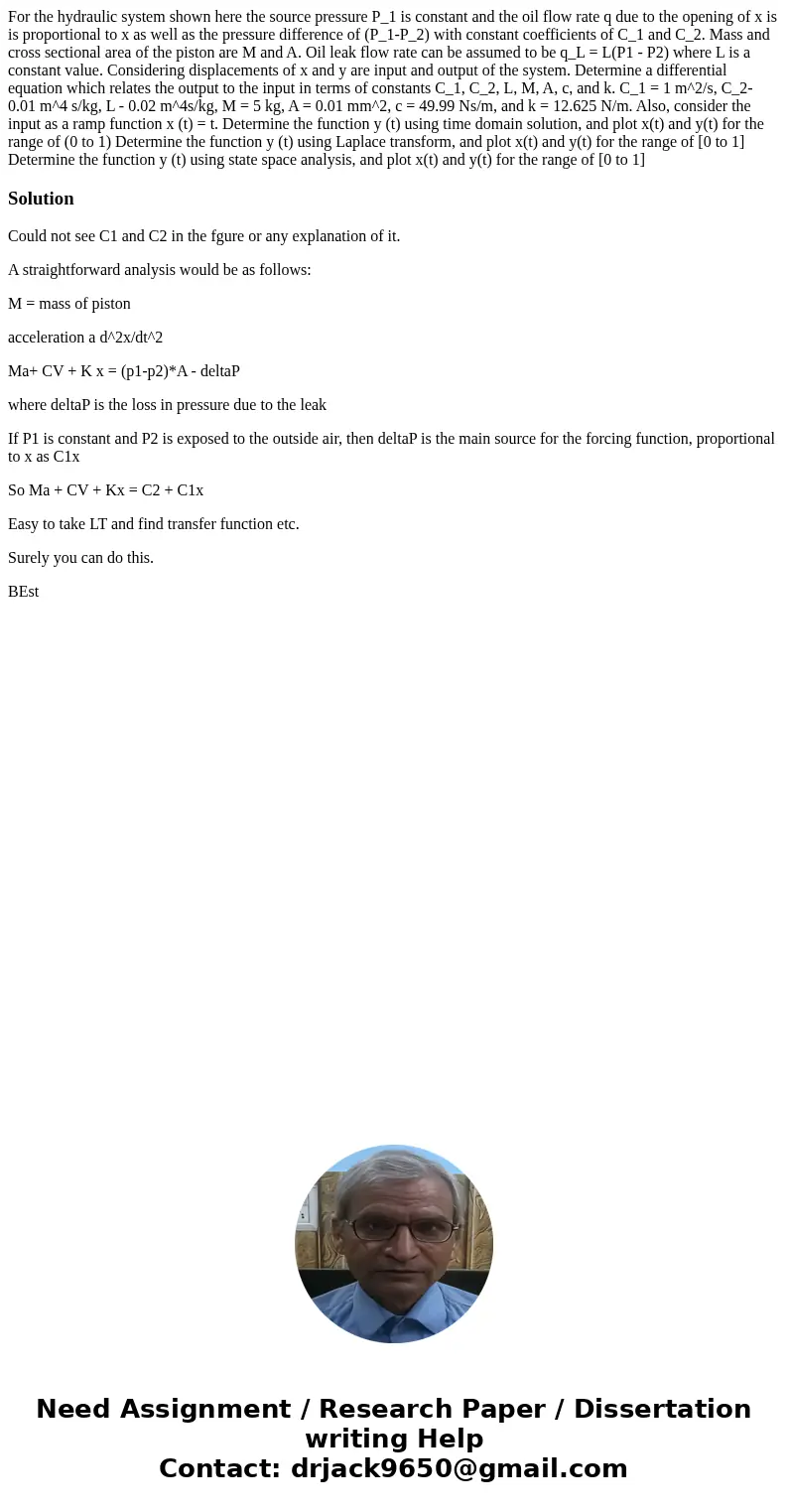For the hydraulic system shown here the source pressure P1 i
For the hydraulic system shown here the source pressure P_1 is constant and the oil flow rate q due to the opening of x is is proportional to x as well as the pressure difference of (P_1-P_2) with constant coefficients of C_1 and C_2. Mass and cross sectional area of the piston are M and A. Oil leak flow rate can be assumed to be q_L = L(P1 - P2) where L is a constant value. Considering displacements of x and y are input and output of the system. Determine a differential equation which relates the output to the input in terms of constants C_1, C_2, L, M, A, c, and k. C_1 = 1 m^2/s, C_2- 0.01 m^4 s/kg, L - 0.02 m^4s/kg, M = 5 kg, A = 0.01 mm^2, c = 49.99 Ns/m, and k = 12.625 N/m. Also, consider the input as a ramp function x (t) = t. Determine the function y (t) using time domain solution, and plot x(t) and y(t) for the range of (0 to 1) Determine the function y (t) using Laplace transform, and plot x(t) and y(t) for the range of [0 to 1] Determine the function y (t) using state space analysis, and plot x(t) and y(t) for the range of [0 to 1] 
Solution
Could not see C1 and C2 in the fgure or any explanation of it.
A straightforward analysis would be as follows:
M = mass of piston
acceleration a d^2x/dt^2
Ma+ CV + K x = (p1-p2)*A - deltaP
where deltaP is the loss in pressure due to the leak
If P1 is constant and P2 is exposed to the outside air, then deltaP is the main source for the forcing function, proportional to x as C1x
So Ma + CV + Kx = C2 + C1x
Easy to take LT and find transfer function etc.
Surely you can do this.
BEst

 Homework Sourse
Homework Sourse